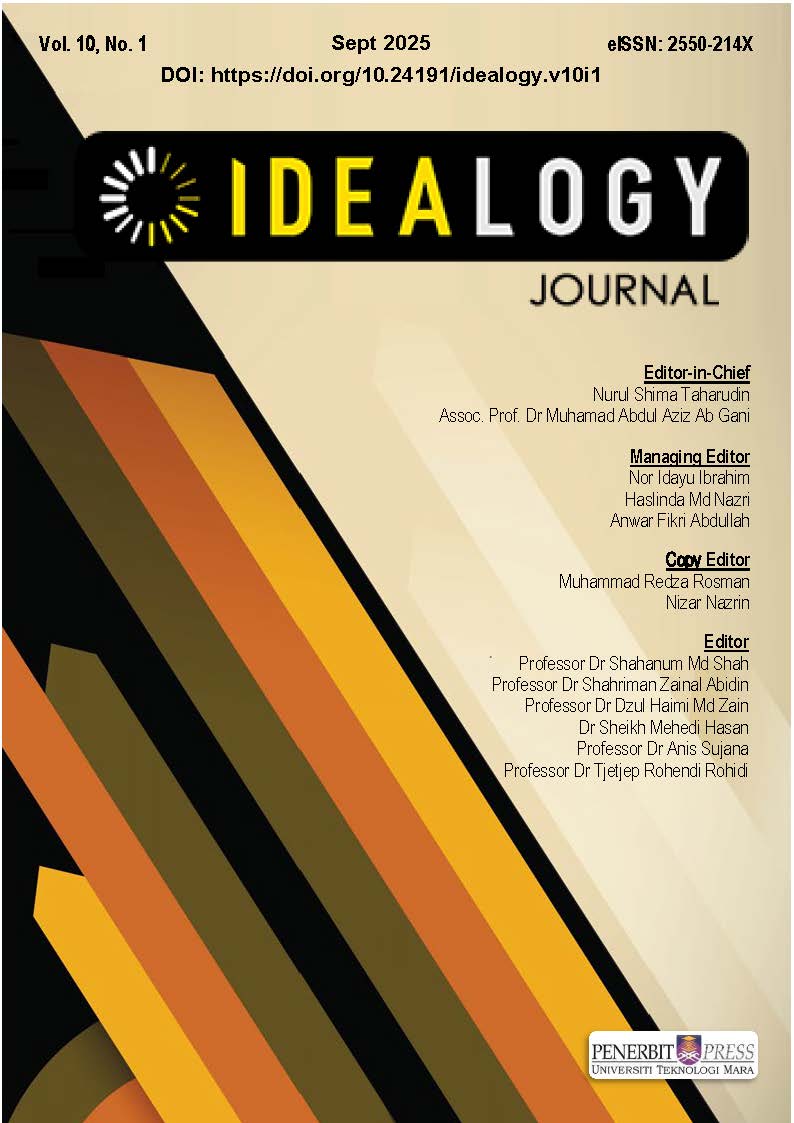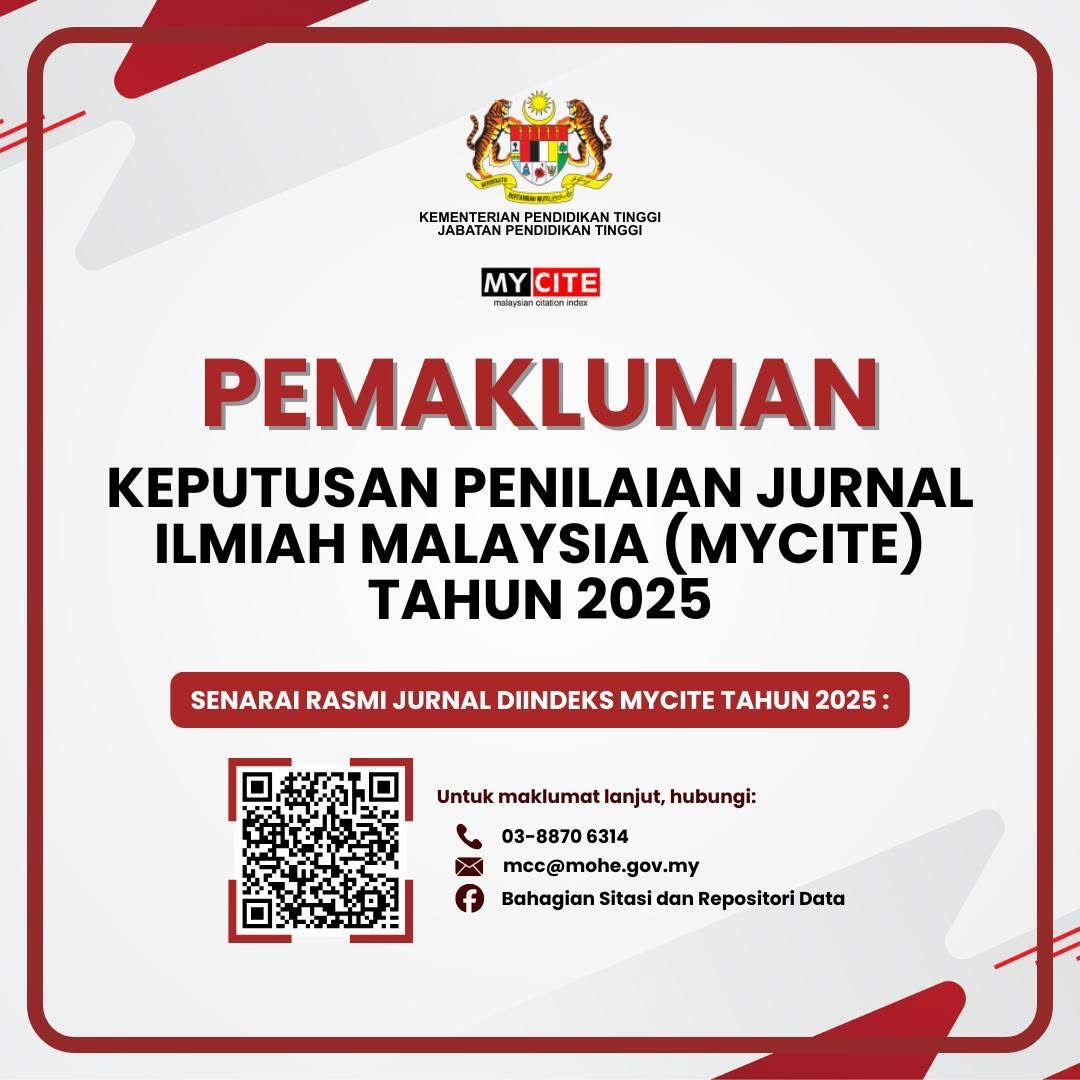Decorative Elements and Symbolic Meanings in Yixing Purple Clay Teapots: A Focus on Buddhist-Themed Decorations
DOI:
https://doi.org/10.24191/idealogy.v10i1.725Keywords:
Yixing Purple Clay Teapot, Buddhist Themes, Decoration Elements.Abstract
The decorative elements of Yixing purple clay teapots have long served as carriers of cultural symbolism, with Buddhist themes playing a pivotal role in their artistic expression. This research aims to explore the application characteristics and symbolic meanings of Buddhist themes in the decorative design of Yixing purple clay teapots. The decoration focuses on Buddhist-themed comprised of 1)Buddhist symbolic patterns, 2) imagery of Buddhist artifacts, 3) themes of Buddhist practice, 4) biomorphic designs with form imagery. By examining these elements, this research seeks to reveal how Buddhist-themed decorations enhance the aesthetic value of Yixing teapots while reflecting deeper spiritual and cultural meanings. A qualitative research approach is adopted, utilising a literature analysis method to classify and analyses a wide range of purple clay teapot decoration cases. The findings demonstrate that Buddhist themes are deeply rooted in the decorative design of Yixing purple clay teapots, symbolising purity and enlightenment. These themes enrich the decorative language of purple clay teapots and imbue them with profound cultural significance and aesthetic appeal. This research provides an in-depth case analysis of Yixing teapot decoration design, contributing to the inheritance and development of China’s intangible cultural heritage craftsmanship.
Keywords: Yixing Purple Clay Teapot, Buddhist Themes, Decoration Elements.
References
Chen, Z. (2020). Research on the innovative shape of the “Toad Lotus Teapot”. Shandong Ceramics, 4, 39–39.
Fan, L. J. (2022). The design and connotation of traditional Chinese cultural art forms from the purple clay pot “monk’s hat”. Jiangsu Ceramics, 6, 66–67. https://doi.org/10.16860/j.cnki.32-1251/tq.2022.06.012
Fan, S. W. (2021). Appreciation of the morphological characteristics of the purple clay teapot “Buddha’s Hand”. Ceramics Science & Art, 11, 161–161. https://doi.org/10.13212/j.cnki.csa.2021.11.127
Fang, Y., & Zhao, Z. (2024). On the creative inspiration and Buddhist connotations of the purple clay teapot work “Water Drop Heart Sutra”. Jiangsu Ceramics, 5, 32–35. https://doi.org/10.16860/j.cnki.32-1251/tq.2024.05.032
Gu, J. F. (2020). On the aesthetic taste and Zen origin of the purple clay teapot “Wu Xiang”. Ceramics Science & Art, 5, 98–98. https://doi.org/10.13212/j.cnki.csa.2020.05.062
He, K. (2022). With a teapot in hand, you can be free from worries - looking at Chinese Buddhist culture from the purple clay teapot “reunion and happiness”. Jiangsu Ceramics, 1, 63–64. https://doi.org/10.16860/j.cnki.32-1251/tq.2022.01.017
Hu, F. Z. (2012). An Examination of the Cultural Significance of Tea and Zen Philosophy in Purple clay Teapots. Agricultural Archaeology, 2, 191–195.
Huang, H. T. (2006). Zen and the Spirit of Chinese Art (1st ed.). China Yanshi Publishing House.
Li, Z. H. (2009). The journey of beauty (1st ed.). Life·Reading·New Knowledge Sanlian Bookstore.
Lin, M. Q. (2023). Briefly describe the aesthetic characteristics of the purple clay teapot “Auspicious Clouds and Ruyi”. Ceramics Science & Art, 11, 193–193. https://doi.org/10.13212/j.cnki.csa.2023.11.091
Liu, H. P. (2020). An Analysis of the Elements of Zen Culture in the Design of Zisha Pottery Shapes: A Case Study of ’Zen-Inspired Teapots’. Ceramics Science & Art, 3, 74–74. https://doi.org/10.13212/j.cnki.csa.2020.03.041
Liu, L. Y. (2013). Study on the Zen of Yixing Purple Clay Tea Set——Taking the shape of traditional Purple Clay Tea Set as a clue] [Master’s Thesis. Jiangnan University.
Liu, Z. Q. (2023). Appreciating the Cultural Connotation of the Purple Clay Monk’s Hat Teapot. Ceramics Science & Art, 6, 183–183. https://doi.org/10.13212/j.cnki.csa.2023.06.090
Lu, J. (2023). A casual discussion on the shape and meaning of the purple clay “Monk’s Hat teapot”. Ceramics Science & Art, 2, 130–130. https://doi.org/10.13212/j.cnki.csa.2023.02.081
Qian, C. (2024). On “Body like Bodhi, Mind like a Mirror” The Zen charm in pottery carving. Ceramics Science & Art, 6, 172–172. https://doi.org/10.13212/j.cnki.csa.2024.06.113
Qian, R. K. (2019). Research on Purple Clay Buddhist Sculpture Art [Master’s Thesis, Nanjing Normal University]. https://doi.org/10.27245/d.cnki.gnjsu.2019.000375
Shan, Z. L. (2021). On the Flower Shape of the Purple Clay Teapot “Bodhi” and Its Zen Meaning in Life. Jiangsu Ceramics, 1, 74–75. https://doi.org/10.16860/j.cnki.32-1251/tq.2021.01.049
Shen, F. (2021). On the Beauty of the Shape of the Purple Clay Teapot “Heart Sutra Elegance” and Its Buddhist Culture. Ceramics Science & Art, 4, 130–130. https://doi.org/10.13212/j.cnki.csa.2021.04.091
Shen, Z. (2021). The beauty of purple sand art and Buddhist Zen from the perspective of the “Pudu Teapot”. Ceramics Science & Art, 11, 124–124. https://doi.org/10.13212/j.cnki.csa.2021.11.091
Shi, X. Z. (2022). On the Pottery Carving Decoration and Cultural Connotation of the Purple Clay Teapot “Lotus Seed”. Ceramics Science & Art, 3, 152–152. https://doi.org/10.13212/j.cnki.csa.2022.03.097
Tan, M. (2022). Once troubles are gone, they become Bodhi - A brief discussion on the shape design and cultural conception of the purple clay teapot “Bodhi”. Jiangsu Ceramics, 1, 55–56. https://doi.org/10.16860/j.cnki.32-1251/tq.2022.01.012
Wang, S. S. (2012). An analysis of the cultural connotation of “Bafang Zhenta Teapot”. Ceramics Science & Art, 10, 67–67. https://doi.org/10.13212/j.cnki.csa.2012.10.031
Wang, X. (2024). Analyzing the pottery engraving methods and the thematic choices in the purple clay art piece ’Observing the Mind’. Ceramics Science & Art, 9, 192–192. https://doi.org/10.13212/j.cnki.csa.2024.09.079
Wang, X. Q. (2021). A brief discussion on the design and Buddhist conception of the purple clay “Buddha Crossing Teapot”. Ceramics, 5, 82–83. https://doi.org/10.19397/j.cnki.ceramics.2021.05.026
Wang, Z. J. (2024). A brief discussion on the creation of the purple clay teapot “Auspicious Clouds”. Ceramics Science & Art, 5, 154–154. https://doi.org/10.13212/j.cnki.csa.2024.05.103
Wu, Y. W. (2022). Auspicious clouds and auspicious mists, lotus flowers blooming by themselves: the vein pattern characteristics and Buddhist charm of the purple clay teapot “Fanlian”. Ceramics, 11, 124–125. https://doi.org/10.19397/j.cnki.ceramics.2022.11.044
Xu, W. G. (2022). Gentle and charming, purple rhyme conveys emotion——On the pottery carving culture and Buddhist origin of the purple clay teapot “Heart Sutra Xishi”. Ceramics Science & Art, 9, 162–162. https://doi.org/10.13212/j.cnki.csa.2022.09.116
Yang, Q. Q. (2023). Breeze Through Bamboo Listening to Buddhist Chants - A Discussion on the Bamboo Design and Cultural Essence of Purple Clay Teapots “Buddha Top, Top Buddha Pair”. Jiangsu Ceramics, 1, 56–58. https://doi.org/10.16860/j.cnki.32-1251/tq.2023.01.051
Ying, J. Y. (2019). On the ecological modeling and Buddhist conception of the “Buddha’s Hand Teapot”. Shandong Ceramics, 3, 39–39.
Zeng, Y. F. (2022). The modeling design and Buddhist origin of purple sand art from the “Zen Teapot”. Ceramics Science & Art, 5, 117–117. https://doi.org/10.13212/j.cnki.csa.2022.05.101
Zhang, J. Z. (2024). Explore the beauty of purple clay craftsmanship and humanistic charm from the purple clay teapot “Golden Lotus”. Jiangsu Ceramics, 5, 42–44. https://doi.org/10.16860/j.cnki.32-1251/tq.2024.05.034
Zhang, Q. (2023). A brief discussion on the creation and interpretation of purple clay lotus-themed works. Jiangsu Ceramics, 4, 52–53. https://doi.org/10.16860/j.cnki.32-1251/tq.2023.04.011
Zhang, W. J. (2019). There is no Bodhi tree, nor is there a mirror stand: A brief discussion on the creation of the purple clay teapot “Bodhi”. Jiangsu Ceramics, 4, 49–51. https://doi.org/10.16860/j.cnki.32-1251/tq.2019.04.038
Zhu, F. (2022). The creative aesthetics and cultural connotations of traditional Chinese art from the purple clay teapot “Auspicious Clouds Bring Good Luck”. Ceramics Science & Art, 6, 156–156. https://doi.org/10.13212/j.cnki.csa.2022.06.020
Zhuang, Q. (2021). On the Modeling, Decoration and Cultural Charm of the Purple Clay “Maitreya of the Four Squares”. Jiangsu Ceramics, 4, 66–67. https://doi.org/10.16860/j.cnki.32-1251/tq.2021.04.038
Downloads
Published
Issue
Section
License
Copyright (c) 2025 UiTM Press

This work is licensed under a Creative Commons Attribution-NonCommercial-NoDerivatives 4.0 International License.
UiTM Press (the Publisher) has agreed to publish the undersigned author’s paper in Idealogy Journal. The agreement is contingent upon the fulfilment of a number of requirements listed below.
1. The undersigned author warrants that the paper entitled below is original, that it is not in any way libellous or unlawful in Malaysia, that it does not infringe any copyright or other proprietary right. The undersigned hereby represents and warrants that he/she is the author of the paper, except for material that is clearly identified as to its original source, with permission notices from the copyright owners where required. The undersigned represents that he/she has the power and authority to sign and execute this agreement.
2. The undersigned author warrants that the paper entitled below has not been published elsewhere, and also it will not be submitted anywhere else for publication prior to acceptance/rejection by this Journal.
3. By submitting the paper entitled below, the undersigned author agrees to transfer the rights to publish and distribute the paper in an international e-journal (entitled above) to Publisher.
4. The undersigned author agrees to make a reasonable effort to conform to Publisher's submission guidelines and to liaise with the editor to ensure that the requirements of these guidelines are met to a reasonable degree.
5. The corresponding author signs for and accepts responsibility for releasing this material on behalf of any and all coauthors. This agreement is to be signed by at least one of the authors who has obtained the assent of the co-author(s) where applicable. After submission of this agreement signed by the corresponding author, changes of authorship or in the order of the authors listed will not be accepted.



